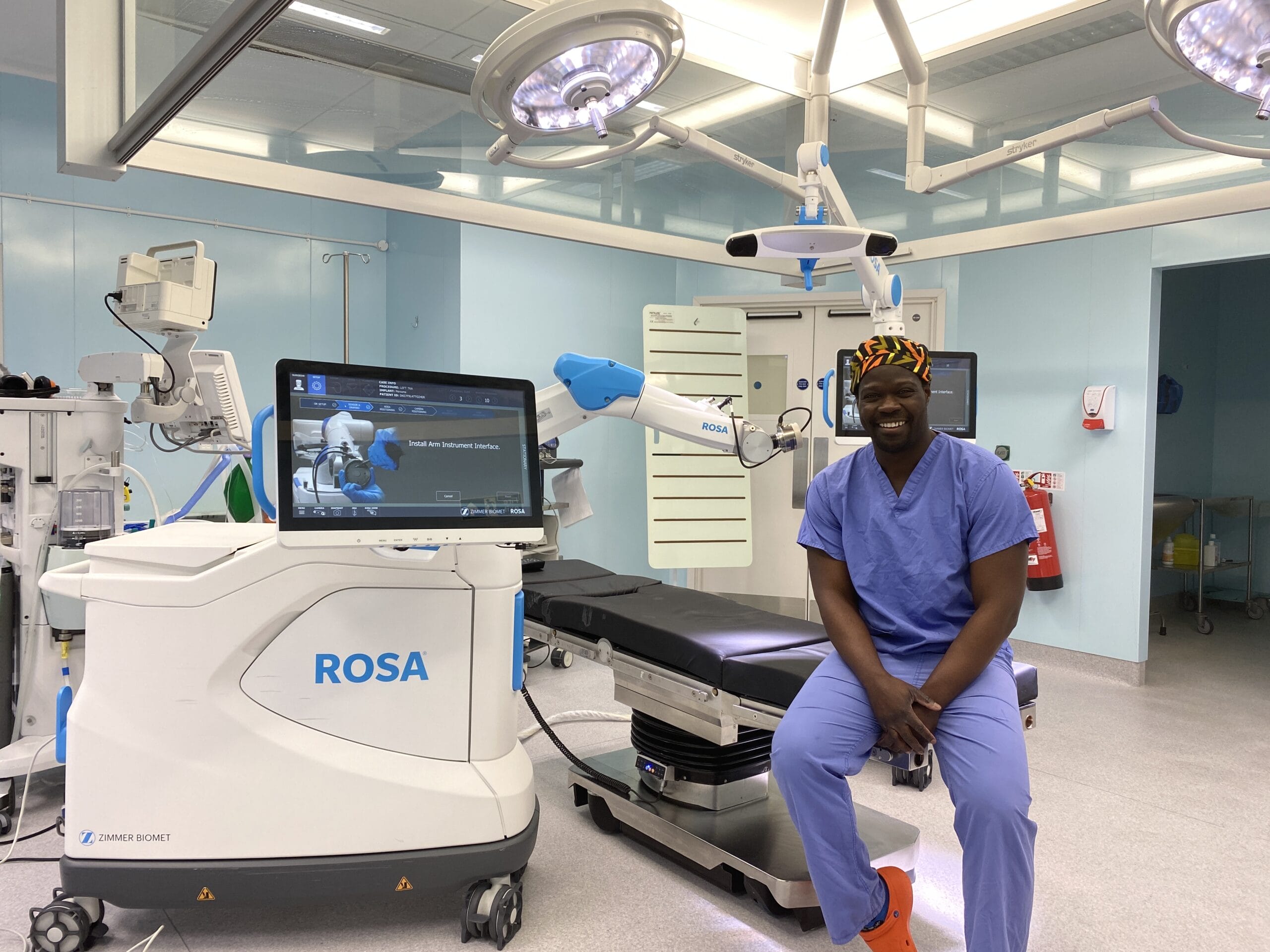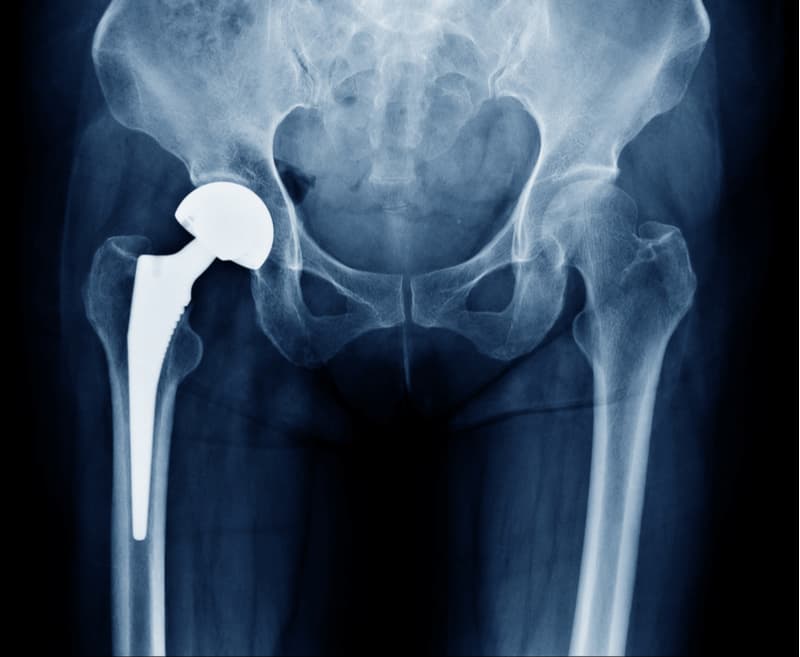A Q&A with Consultant Orthopaedic Surgeon Mr Sam Rajaratnam FRCS, knee joint replacement specialist, discussing the latest developments in knee replacement surgery.
What is a knee replacement?
A knee replacement is an operation that involves replacing a worn or damaged knee joint with an artificial one. One of the most common reasons for needing a joint replacement is osteoarthritis. This is a type of arthritis where gradual wear and tear leads to loss of the surface cartilage protecting the end of the bone. With the knee, a joint replacement involves replacing the joint surface at the end of the thigh bone and at the top of the shin bone.
Who can benefit from a knee replacement?
Anyone who is in significant pain or has swelling and instability due to worn surfaces inside the knee may benefit from this procedure. Initially, conservative treatments such as painkillers, exercise, physiotherapy and muscle strengthening may have been tried to manage the condition, but if these are unsuccessful then a permanent surgical solution may be required.
Has there been an improvement with implant design over the years?
I believe implant designs have improved tremendously over the past ten years with modern replacements striving to mimic the natural shape of the knee more accurately. This can lead to better function and feel of the replaced joint.
Are the materials they are made of getting better?
Implant manufacturers globally have invested tremendous resources into improving the manufacturing and materials. This is resulting in reduced wear of the artificial joint, and when combined with better surgical techniques, this seems to be leading to knee joint replacements lasting even longer. Currently, the industry expectation is that the majority of knee replacements are expected to last over 20 years.
Does this mean they can be used in younger patients?
Generally, we are seeing an increase in younger patients seeking joint replacement surgery as they seek to regain their quality of life rather than suffer for a number of years with arthritic pain. However, a particularly careful discussion about wear to the artificial joint and potential revision surgery down the line needs to be had when replacing the joint of the younger patient as they may need further surgery on that joint in future.
As a knee surgeon, are there any advances in knee replacement surgery that you are excited about?
The Holy Grail is to provide the patient with an entirely pain-free and normally functioning knee that bends in exactly the same way as a healthy one. This would allow the patient to completely forget about their artificial knee. Newer knee designs that resemble normal anatomy are an exciting advance along with personalised alignment solutions. However, as new technology is introduced there needs to be a discussion on the risks and benefits of the latest implant designs versus the advantages of the “tried and tested” ones.
Has rehabilitation improved in recent years?
This has been one of the biggest factors in the recent success of knee replacement/resurfacing procedures. Over the past ten years, we have successfully introduced accelerated or rapid recovery programmes which have seen a dramatic reduction in the length of stay in hospitals around the UK. Early movement greatly reduces complications such as chest infections and blood clots forming and also reduces pain in the replaced knee. The focus is now moving on from this to achieve “permanent and functional recovery” for the patient, enabling them to even return to an active sporting lifestyle if desired.
Are the complications of this type of surgery reducing?
The famous golfer Gary Player once said: “The more we practice, the luckier we get!” This applies to surgery too. Horder Healthcare performs high volumes of surgical procedures so is able to streamline its approach and reduce serious complications.
The excellent patient outcomes achieved at The Horder Centre and The McIndoe Centre certainly contributed to their respective ‘outstanding’ and ‘good’ ratings awarded by the Care Quality Commission after their last inspections – both extraordinary achievements.
What makes Horder Healthcare unique
Horder Healthcare is committed to providing the very best quality of care for our patients and customers. We are continuously working on improving and reducing risks and this is reflected in our consistently high CQC results, patient satisfaction questionnaires and minimal levels of infection.
We are a charity
We reinvest our profit to benefit more people and help us achieve our aim of advancing health.






